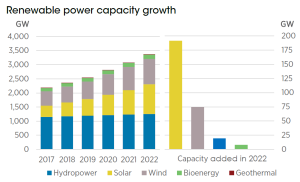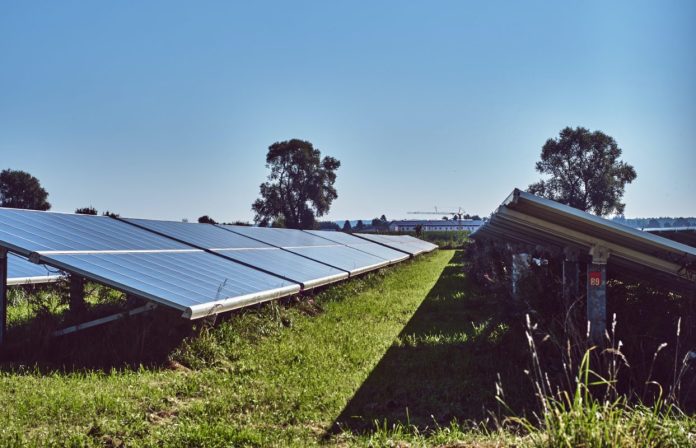Solar energy accounted for about 65% of global renewable energy capacity growth in 2022, according to a study conducted by the International Renewable Energy Agency (IRENA).
IRENA’s Renewable Capacity Statistics 2023 showed that a total of 192GW of solar capacity was installed in 2022, up 22% year-on-year. Last year, renewable generation capacity increased by 295GW (+9.6%), meaning solar capacity accounted for 65.1% of the global renewable power capacity growth.
Geographically, Asia witnessed the most significant growth in solar energy as a total of 112GW of capacity was installed, up from 75GW in 2021. Major capacity increases took place in China, India and Japan, increasing by 86GW, 13.5GW and 4.6GW, respectively.
In the Americans, the US added 17.6GW of solar capacity in 2022, while Brazil installed 9.9GW. In Europe, the Netherlands and Germany grew 7.7GW and 7.2GW, respectively.

More broadly, solar and wind energy continued to lead the renewable capacity expansion, jointly accounting for 90.5% of all net renewable additions in 2022. IRENA said that the growth in wind and solar led to the highest annual increase in renewable generating capacity and the second highest growth on record in percentage terms.
The study also examined renewable generation capacity by energy sources. By the end of last year, global renewable generation capacity was 3.37TW, of which 1.05TW, or 31.2%, was solar. Renewable hydropower accounted for the largest share of the global total with a capacity of 1.25TW. Wind energy (899GW) came third, accounting for 27% of the total renewable generation capacity.
“This continued record growth shows the resilience of renewable energy amidst the lingering energy crisis,” said Francesco La Camera, IRENA’s director-general.
“The strong business case of renewables coupled with enabling policies has sustained an upward trend of their share in the global energy mix year on year. But annual additions of renewable power capacity must grow three times the current level by 2030 if we want to stay on a pathway limiting global warming to 1.5°C,” he added.






